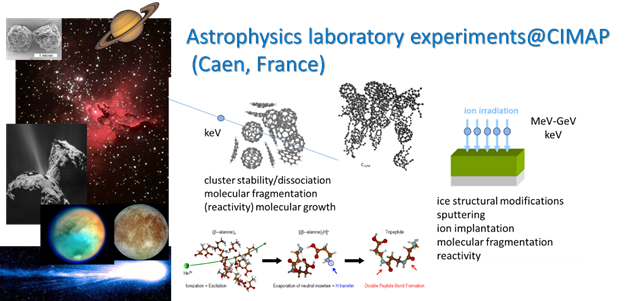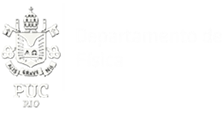Data / Hora
Date(s) - 28/11/2023
17:00 - 18:00
Categorias
COLÓQUIO DO DEPARTAMENTO DE FÍSICA
Energetic processing of molecular clusters and astrophysical ices by ion impact
Alicja Domaracka
Centre de Recherche sur les Ions, les Matériaux et la Photonique (CIMAP) – UMR 6252, (CEA/CNRS/ENSICAEN/Université de Caen Normandie), Boulevard Henri Becquerel, CS 65133 14076 Caen cedex 5, France
28/11/2023 – 3a. feira – 17h – sala L438
In space, the molecular matter is energetically processed by ionizing radiation and two scenarios are proposed to explain the emergence of new molecular species. On the one hand, the bottom-up approach proposes the growth of larger molecules from smaller subunits. On the other hand, the top-down scenario considers the emission of molecular species from a large piece of matter. In order to study the processes leading to the formation of complex organic molecules, we have considered ion interaction with molecular clusters or icy mantels.
Molecular systems in space are expose to energetic ions e.g. solar wind or ions trapped in the Jupiter magnetosphere and cosmic rays. The GANIL facility (Grand Accélerateur National d’Ions Lourds, Caen, France), a unique tool to study ion interactions with matter, allow to study ion induced fragmentation and reactivity of such systems in a very large range of kinetic energies of projectiles (from keV to GeV, ions from He to U). During my talk, I will present examples of i) intra-cluster molecular growth processes within of polycyclic aromatic hydrocarbons and amino acids molecular clusters induced by ion collisions [1] and ii) ion processing of astrophysical ice analogues and condensed complex organic molecules (like nucleobases) [2].

- R. Delaunay et al, J. Phys. Chem. Lett. 6 1536, (2015) ; A. Domaracka et al, Phys. Chem. Chem. Phys. 20, 15052 (2018) ; P. Rousseau et al, Nature Communications 11, 3818 (2020).
- H. Rothard et al, J. Phys. B 50, 062001 (2017), G. S. Vignoli Muniz et al, Astrobiolgy 17 298 (2017). And ACS Earth Space Chem. 511, 2149 (2022).
